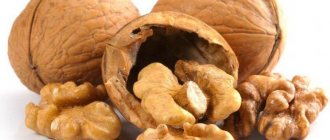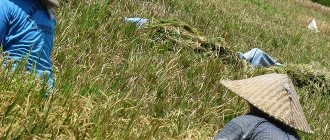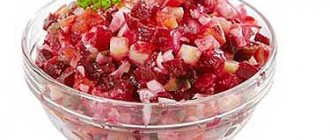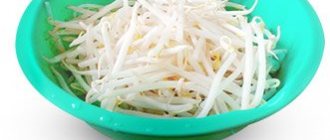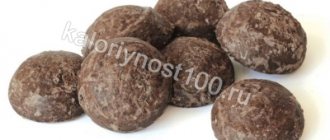How to choose and check quality
How to choose a good product on the market or during a “mushroom hunt”? I want to bring home a full basket of clean, strong mushrooms and use every single one of them.
The mushroom cap is dry in sunny weather. If it has rained, it may be slippery.
The pulp of a young mushroom is dense, juicy, white, while that of a mature mushroom is fibrous, yellowish, light beige. The leg is hard and strong. When processed and dried, the cut does not darken.
Wormy specimens should not be collected. If the smell of the plant seems unnatural, the product will not be edible.
At the market, goods should only be taken from trusted suppliers who collect forest products from ecologically clean forests.
How to choose a good product in a store? It is better to buy mushroom products in a specialized department.
When purchasing, pay attention to the storage temperature, the tightness of the bags, and the shelf life.
Is it possible to eat porcini mushrooms while breastfeeding?
Many women are interested in the possibility of eating mushroom pulp while breastfeeding. Experts do not recommend adding it to the diet earlier than 4 months after delivery. This can cause colic and allergies in the baby. At a later age, the medicinal properties of porcini mushrooms will fully manifest themselves. But it is important to introduce the product in small portions, observing how the child reacts to it.
We recommend reading: Corn silk: benefits and harms, instructions for use
Peculiarities of influence on the human body, why they are beneficial and harmful
Plant protein increases the formation of gastric juice. Plant enzymes involved in the breakdown of coarse fiber, glycogen and fats help digest any food.
Mushrooms take up to 8 hours to digest in the stomach.
The pulp of the plant contains riboflavin, which improves the condition of hair, nails and skin. Boletus mushrooms contain ergothioneine, which is involved in cell renewal processes, and the antioxidant glucan.
Adult healthy men and women can eat boletus mushrooms in any form. It must be remembered that these products are heavy foods and are difficult to digest.
Heat-treated pulp contains chitin, which is not decomposed by enzymes. But dried porcini mushroom is digestible by 80%.
Pregnant and lactating women should consume porcini mushrooms with caution. During pregnancy, portions of porcini mushrooms should be small.
It is advisable for a nursing woman to avoid such food until the baby is one year old.
At what age can children eat porcini mushrooms? Children under 12-14 years old should not eat porcini mushrooms (due to imperfections in the digestive system). The child may experience flatulence, colic, constipation or diarrhea.
In old age, mushroom products should be eaten with caution. Elderly people often suffer from diseases of internal organs. Eating mushrooms can cause exacerbation of diseases.
Allergies may be associated with the consumption of porcini mushrooms. It is caused not only by the dishes themselves, but also by the ingestion of fungal spores into the lungs.
In this case, boletus dishes are removed from the menu and any contact with fresh porcini mushrooms is avoided.
Athletes can eat boletus (up to 500 grams per day) if they do not have the diseases listed above.
This plant is good for building muscle mass for bodybuilders. It is recommended to increase the interval between meals and training.
If you have diabetes (types 1 and 2), you can eat porcini mushrooms (after consulting your doctor). This plant has a low glycemic index; mushroom dishes do not increase blood sugar.
Beneficial properties of porcini mushroom
Porcini mushroom is a storehouse of vitamins and minerals that help with various ailments.
What are the benefits of porcini mushroom:
- Promotes hair and nail growth and skin improvement
. Thanks to riboflavin present in porcini mushrooms, this process occurs. In addition, this useful substance is also responsible for the growth of the entire human body. - Normalizes the functioning of all organs
. Thanks to ascorbic acid in porcini mushroom, the entire human body will function well. This is facilitated by calcium and iron in this product. - Maintains normal thyroid gland
. The same riboflavin plays an important role in normalizing the functioning of this organ. - Helps in the fight against cancer
. Sulfur and polysaccharides in porcini mushrooms help with the mentioned diseases. In addition, selenium, which is part of them, can cure cancer in the early stages. And the use of dry boletus mushrooms is the prevention of cancer. - Useful for atherosclerosis and anemia
. The lecithin ester contained in these mushrooms prevents fat from being deposited on the walls of blood vessels, thereby helping with these ailments. - Helps with angina pectoris
. The alkaloid hercedine, present in boletus, is used in the treatment of this disease. - Renews cells
. The amino acid ergothioneine is involved in their reduction, i.e. By consuming porcini mushrooms, we benefit such important human organs as the eyes, kidneys, liver and bone marrow. - Strengthens the immune system
. The digestible carbohydrate in porcini mushrooms, being a strong antioxidant, helps the body in the fight against viruses and bacteria. - Helps with inflammatory processes
. Phytohormones reduce the likelihood of conditions that are inflammatory in nature. - Calms the nervous system
. This is due to the B vitamins that make up the porcini mushroom. When consuming this product, a person feels calm, mood, sleep and memory improve, as well as energy metabolism. - Helps with tuberculosis
. Porcini mushroom, which contains many vitamins and minerals, is for this reason used as a medicine for patients with this disease. - Improves appetite
. By consuming porcini mushrooms, a person releases digestive juices and increases the desire to eat.
Potential dangers and contraindications
The mushroom body is good at absorbing heavy metals and organic compounds that are hazardous to health.
If the taste of the pulp is bitter, the cut turns pink or blue, it is better not to risk it.
Contraindications for use:
- cholelithiasis and urolithiasis;
- diseases of the kidneys, pancreas, liver;
- constipation, diarrhea, flatulence;
- diseases of the stomach and intestines;
- high cholesterol;
- gout and other diseases of the musculoskeletal system.
Recommendations for use
Processing before eating: mushrooms are sorted and washed. Remove the wormy areas and cut the pulp into pieces.
Cooking time varies depending on the cooking method and ranges from 20 to 40 minutes.
Dried boletus mushrooms can be eaten without processing (like chips or crackers).
How often can you eat porcini mushrooms? Healthy adults can eat mushroom dishes every day. The optimal time for use is mid-day.
The daily consumption rate of dried mushrooms for adults is up to 15-20 grams, fresh - up to 150-200 grams per day (according to the Soviet-era data from the Academy of Medical Sciences of the Russian Academy of Sciences).
For pregnant, lactating women, diabetics and children, the norm is 100-350 grams per week.
These gifts of the forest are included in the dietary menu; their beneficial properties are recognized by official medicine, traditional medicine and cosmetology.
Harm and contraindications to eating porcini mushroom
Despite the fact that the porcini mushroom is the most popular edible mushroom and also has many minerals in its composition, not everyone can eat it.
Who is not recommended to eat this mushroom:
- Pregnant women and children under 14 years of age
. Chitin, which is contained in the shell of porcini mushrooms, is difficult to absorb by the child’s body, and is also not recommended for use by pregnant women for the same reason. - People with kidney and digestive system diseases
. If there are problems with these organs, a sufficient amount of enzymes is not produced to absorb chitin. Taking mushroom broth may also cause an aggravation. - Allergy sufferers
. Allergic reactions can occur to any product, porcini mushrooms are no exception. They can be caused by fungal spores.
Well, we must not forget that our wonderful “king” of mushrooms has a poisonous twin that causes poisoning. Those people who are not very knowledgeable about mushrooms should not collect those that turn blue (in other words, change their color) when cut, and also have a bitter taste. Be careful and take care of your health and your life!
Use in cooking - recipes
Porcini mushrooms are boiled, stewed, pickled, salted, fried, and dried for the winter. In Italian cuisine there are recipes for salads with fresh boletus, which are not subject to any processing.
Mushroom pate
Boletus mushrooms (1.5 kg) are cut into pieces, boiled until tender and placed on a sieve. In a frying pan in vegetable oil, fry two large chopped onions and a large carrot, grated.
The ingredients are fried together, then the mixture is minced in a meat grinder, ground black pepper and a clove of grated garlic are added. The mixture is mixed and placed in clean jars.
The pate can be eaten within a few days or frozen in the freezer for the winter.
With Worcestershire sauce and white wine
Boletus mushrooms (0.7 kg) are cut and poured with cold water for an hour, after which they are thrown onto a sieve and dried. Fry flour in butter in a frying pan.
Add a large chopped onion and grated garlic (2 cloves), fry until transparent. Place the mushrooms in the pan, mix the ingredients and simmer under the lid for 2 minutes.
Then add a glass of dry wine and simmer until the liquid is reduced by half. Add a teaspoon of Worcestershire sauce and half a glass of warm vegetable broth.
Bring the mixture to a boil and simmer for about 40 minutes. Portions of the finished dish are sprinkled with fresh herbs to taste.
In this video, there is a recipe for making fried porcini mushrooms with sour cream:
Calorie white mushroom. Chemical composition and nutritional value.
Nutritional value and chemical composition of “Porcini mushroom”.
The table shows the nutritional content (calories, proteins, fats, carbohydrates, vitamins and minerals) per 100 grams of edible portion.
| Nutrient | Quantity | Norm** | % of the norm in 100 g | % of the norm in 100 kcal | 100% normal |
| Calorie content | 22 kcal | 1684 kcal | 1.3% | 5.9% | 7655 g |
| Squirrels | 3.09 g | 76 g | 4.1% | 18.6% | 2460 g |
| Fats | 0.34 g | 56 g | 0.6% | 2.7% | 16471 g |
| Carbohydrates | 3.26 g | 219 g | 1.5% | 6.8% | 6718 g |
| Alimentary fiber | 1 g | 20 g | 5% | 22.7% | 2000 g |
| Water | 92.45 g | 2273 g | 4.1% | 18.6% | 2459 g |
| Ash | 0.85 g | ~ | |||
| Vitamins | |||||
| Vitamin B1, thiamine | 0.081 mg | 1.5 mg | 5.4% | 24.5% | 1852 |
| Vitamin B2, riboflavin | 0.402 mg | 1.8 mg | 22.3% | 101.4% | 448 g |
| Vitamin B4, choline | 17.3 mg | 500 mg | 3.5% | 15.9% | 2890 g |
| Vitamin B5, pantothenic | 1.497 mg | 5 mg | 29.9% | 135.9% | 334 g |
| Vitamin B6, pyridoxine | 0.104 mg | 2 mg | 5.2% | 23.6% | 1923 |
| Vitamin B9, folates | 17 mcg | 400 mcg | 4.3% | 19.5% | 2353 g |
| Vitamin B12, cobalamin | 0.04 mcg | 3 mcg | 1.3% | 5.9% | 7500 g |
| Vitamin C, ascorbic acid | 2.1 mg | 90 mg | 2.3% | 10.5% | 4286 g |
| Vitamin D, calciferol | 0.2 mcg | 10 mcg | 2% | 9.1% | 5000 g |
| Vitamin D2, ergocalciferol | 0.2 mcg | ~ | |||
| Vitamin E, alpha tocopherol, TE | 0.01 mg | 15 mg | 0.1% | 0.5% | 150000 g |
| beta tocopherol | 0.01 mg | ~ | |||
| gamma tocopherol | 0.01 mg | ~ | |||
| delta tocopherol | 0.01 mg | ~ | |||
| Dihydrophylloquinone | 1 mcg | ~ | |||
| Vitamin RR, NE | 3.607 mg | 20 mg | 18% | 81.8% | 554 g |
| Betaine | 9.4 mg | ~ | |||
| Macronutrients | |||||
| Potassium, K | 318 mg | 2500 mg | 12.7% | 57.7% | 786 g |
| Calcium, Ca | 3 mg | 1000 mg | 0.3% | 1.4% | 33333 g |
| Magnesium, Mg | 9 mg | 400 mg | 2.3% | 10.5% | 4444 g |
| Sodium, Na | 5 mg | 1300 mg | 0.4% | 1.8% | 26000 g |
| Phosphorus, Ph | 86 mg | 800 mg | 10.8% | 49.1% | 930 g |
| Microelements | |||||
| Iron, Fe | 0.5 mg | 18 mg | 2.8% | 12.7% | 3600 g |
| Manganese, Mn | 0.047 mg | 2 mg | 2.4% | 10.9% | 4255 g |
| Copper, Cu | 318 mcg | 1000 mcg | 31.8% | 144.5% | 314 g |
| Selenium, Se | 9.3 mcg | 55 mcg | 16.9% | 76.8% | 591 g |
| Zinc, Zn | 0.52 mg | 12 mg | 4.3% | 19.5% | 2308 g |
| Digestible carbohydrates | |||||
| Mono- and disaccharides (sugars) | 1.98 g | max 100 g | |||
| Glucose (dextrose) | 1.48 g | ~ | |||
| Fructose | 0.17 g | ~ | |||
| Essential amino acids | |||||
| Arginine* | 0.078 g | ~ | |||
| Valin | 0.232 g | ~ | |||
| Histidine* | 0.057 g | ~ | |||
| Isoleucine | 0.076 g | ~ | |||
| Leucine | 0.12 g | ~ | |||
| Lysine | 0.107 g | ~ | |||
| Methionine | 0.031 g | ~ | |||
| Threonine | 0.107 g | ~ | |||
| Tryptophan | 0.035 g | ~ | |||
| Phenylalanine | 0.085 g | ~ | |||
| Nonessential amino acids | |||||
| Alanin | 0.199 g | ~ | |||
| Aspartic acid | 0.195 g | ~ | |||
| Glycine | 0.092 g | ~ | |||
| Glutamic acid | 0.343 g | ~ | |||
| Proline | 0.076 g | ~ | |||
| Serin | 0.094 g | ~ | |||
| Tyrosine | 0.044 g | ~ | |||
| Cysteine | 0.012 g | ~ | |||
| Sterols (sterols) | |||||
| Campesterol | 2 mg | ~ | |||
| Saturated fatty acids | |||||
| Saturated fatty acids | 0.05 g | max 18.7 g | |||
| 16:0 Palmitinaya | 0.04 g | ~ | |||
| 18:0 Stearic | 0.01 g | ~ | |||
| Polyunsaturated fatty acids | 0.16 g | from 11.2 to 20.6 g | 1.4% | 6.4% | |
| 18:2 Linolevaya | 0.16 g | ~ | |||
| Omega-6 fatty acids | 0.16 g | from 4.7 to 16.8 g | 3.4% | 15.5% |
The energy value of porcini mushroom is 22 kcal.
Primary Source: Created in the application by the user. Read more.
** This table shows the average levels of vitamins and minerals for an adult. If you want to know the norms taking into account your gender, age and other factors, then use the “My Healthy Diet” application.
Use for weight loss during dieting
Boletus mushrooms are not contraindicated for people on a weight loss diet. They can replace meat. With the same caloric content of dishes, weight loss will be more effective than when eating meat products.
In the dietary menu, this plant is combined with any vegetables (raw, stewed, boiled), which gives the food a special taste. Dishes can be varied with fresh herbs.
There is a mono-diet consisting of salted, pickled mushrooms and a small amount of greens and salads. Mushrooms are washed from marinade before eating.
Nutritional value of mushrooms
In terms of nutritional value, mushrooms occupy a place between meat and vegetables.
In terms of nutritional value, they can be compared to premium vegetables. Mushrooms are considered a low-calorie product. They contain very few carbohydrates and fats. The average calorie content of meat is eight, and fat is eighteen times higher than the average calorie content of mushrooms.
However, dried mushrooms, such as porcini mushrooms, are much more nutritious than eggs or boiled sausage. And porcini mushroom broth has more calories than meat broth, and it is also more tasty and fragrant.
The most digestible mushroom is saffron milk cap. The calorie content of salted camelina exceeds the calorie content of fruits, vegetables, chicken meat and whole milk.
Mushrooms contain a lot of protein, but this protein is difficult for the body to digest. Therefore, mushrooms are not recommended for people with gastrointestinal diseases, liver and kidney diseases.
Medicinal properties
Boletus mushrooms are recommended to be eaten in the treatment of chronic fatigue, inflammatory diseases, and to activate metabolism.
It is recommended to eat them in the treatment of tuberculosis, anemia, to improve the functions of the pancreas, and strengthen the immune system.
When dried, the pulp produces hertzedine, an alkaloid used in the treatment of angina pectoris and atherosclerosis.
You can read information on the Internet that this product should be eaten if you have cancer .
Traditional healers prepare an alcoholic infusion of boletus to prevent cancer, the development of atherosclerosis, reduce blood viscosity and prevent stroke.
Alcohol tincture is used to treat angina pectoris.
Alcohol infusion
Mushroom caps are broken, placed in a jar (almost to the top), filled with vodka or alcohol (40%). The vessel is hermetically sealed and placed in a dark place for 2 weeks.
After this, the raw materials are squeezed out and thrown away, and the alcohol is filtered into another container and stored in a dark place.
Take the drug for 10 days. A teaspoon of infusion is diluted in a small amount of water and drunk twice a day, half an hour before meals.
Tincture on water
Three teaspoons of crushed peeled caps are boiled in 100 ml of water. The solution is boiled by half, cooled and stored in the refrigerator.
Boletus tincture in water treats skin diseases , wounds, poorly healing ulcers, joint pain, cramps, numbness of the limbs.
The product is used for compresses and rubbing. The skin is wiped with a cotton swab three times a day.
Vitamins and microelements in mushrooms
Mushrooms contain a huge amount of different vitamins. Many of them, such as B1, B2, B6, D, H, nicotinic and pantothenic acids, are found in vegetables in very small quantities or are completely absent.
Chanterelles, for example, contain a large amount of amino acids and beta-carotene, which gives them their characteristic yellow color. And there is as much vitamin B1 in these mushrooms as in beef liver.
The content of vitamin P in mushrooms is approximately the same as in yeast, vitamin B is almost the same as in cereals, and in terms of vitamin D content, mushrooms are not inferior to butter.
Many mushrooms contain vitamins A and C in small quantities. Mushrooms also contain a huge amount of minerals and trace elements, such as potassium, iron, phosphorus, calcium, copper, manganese, iodine, zinc and others.
